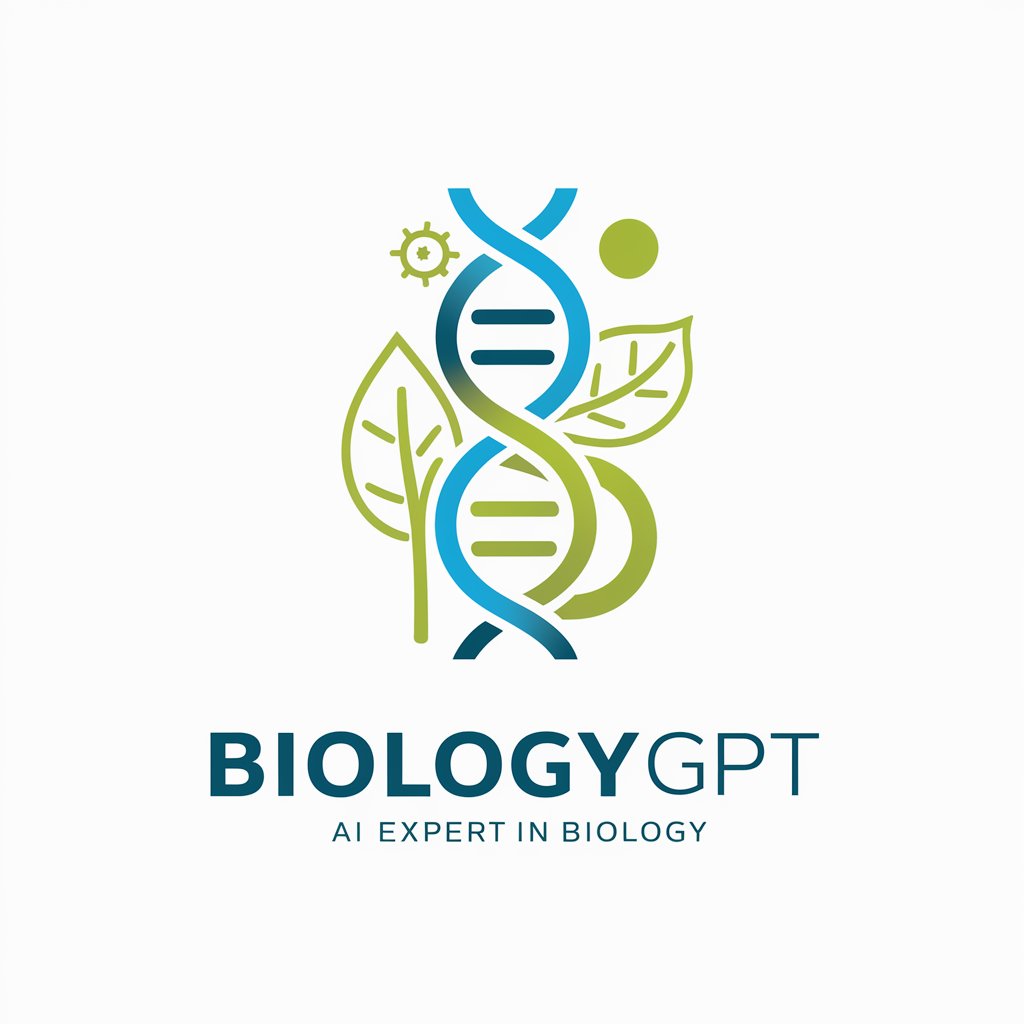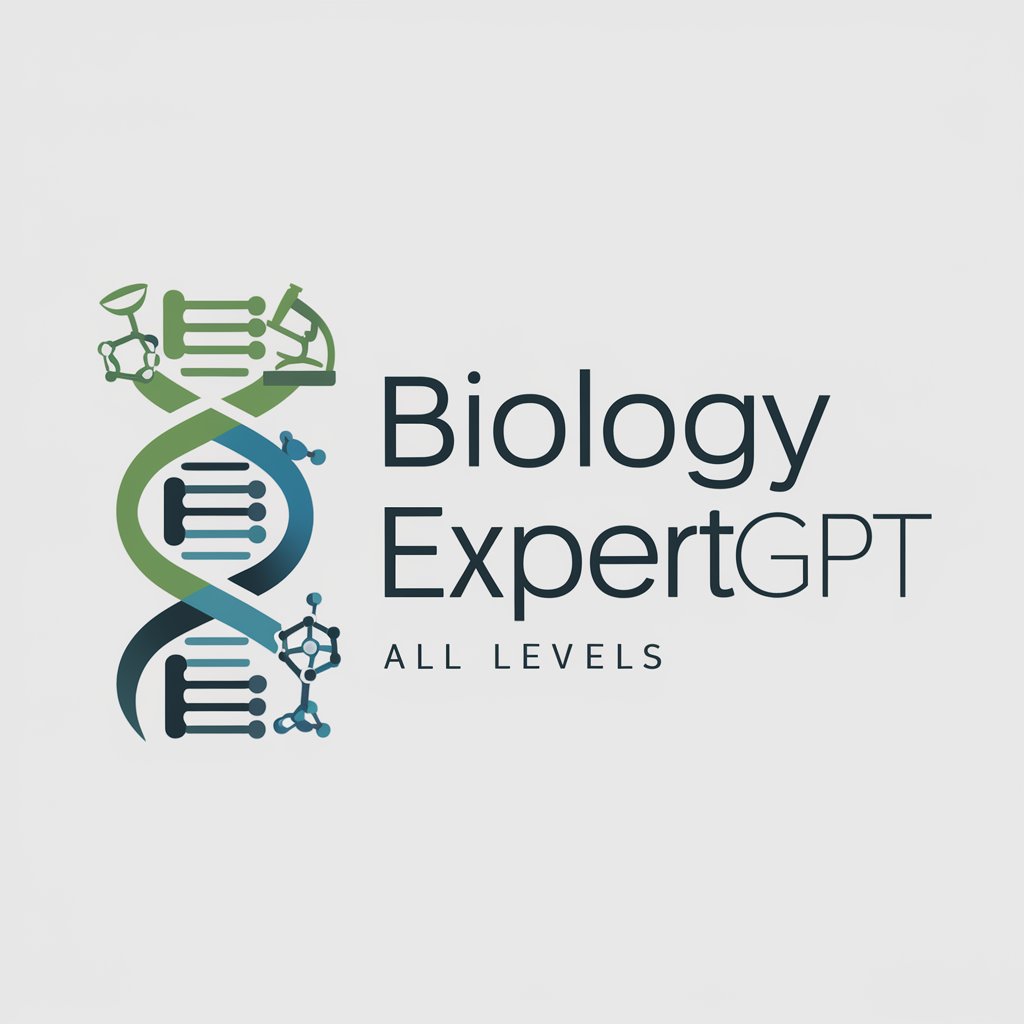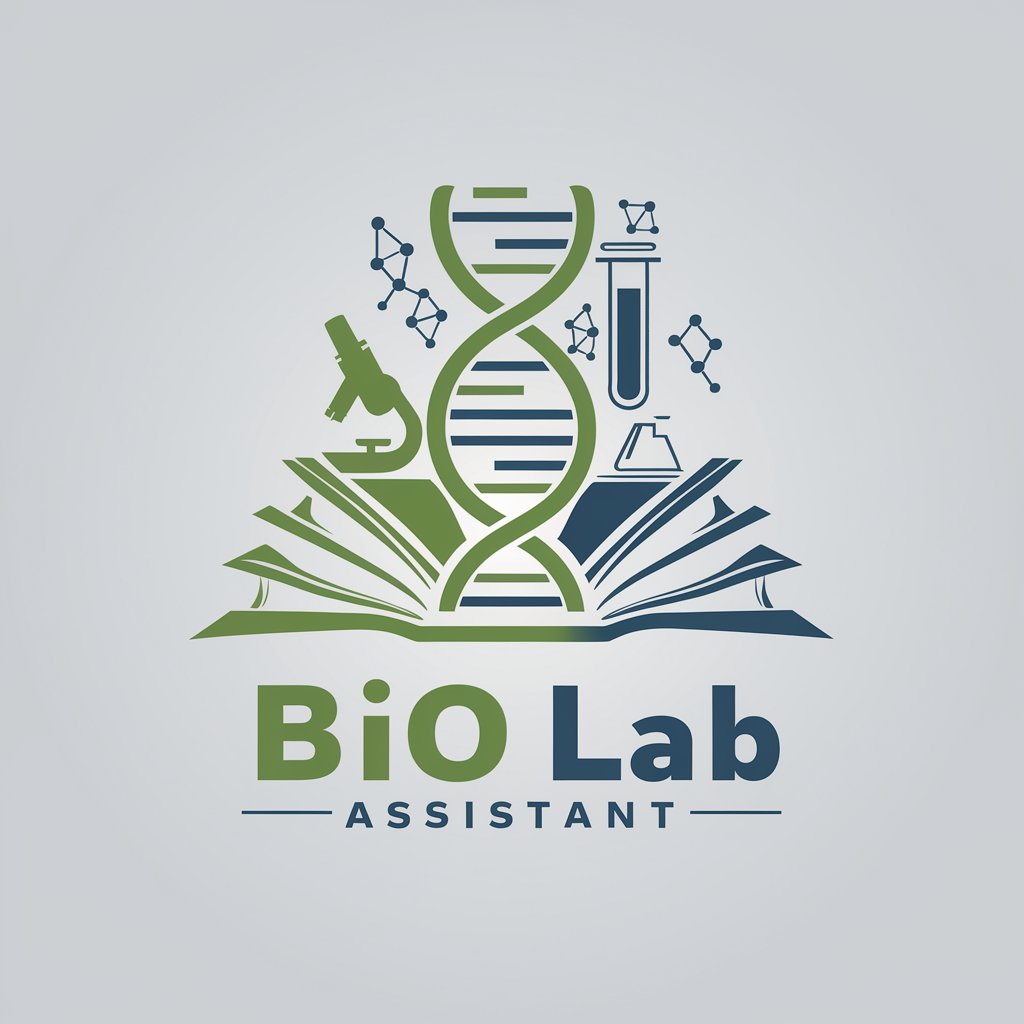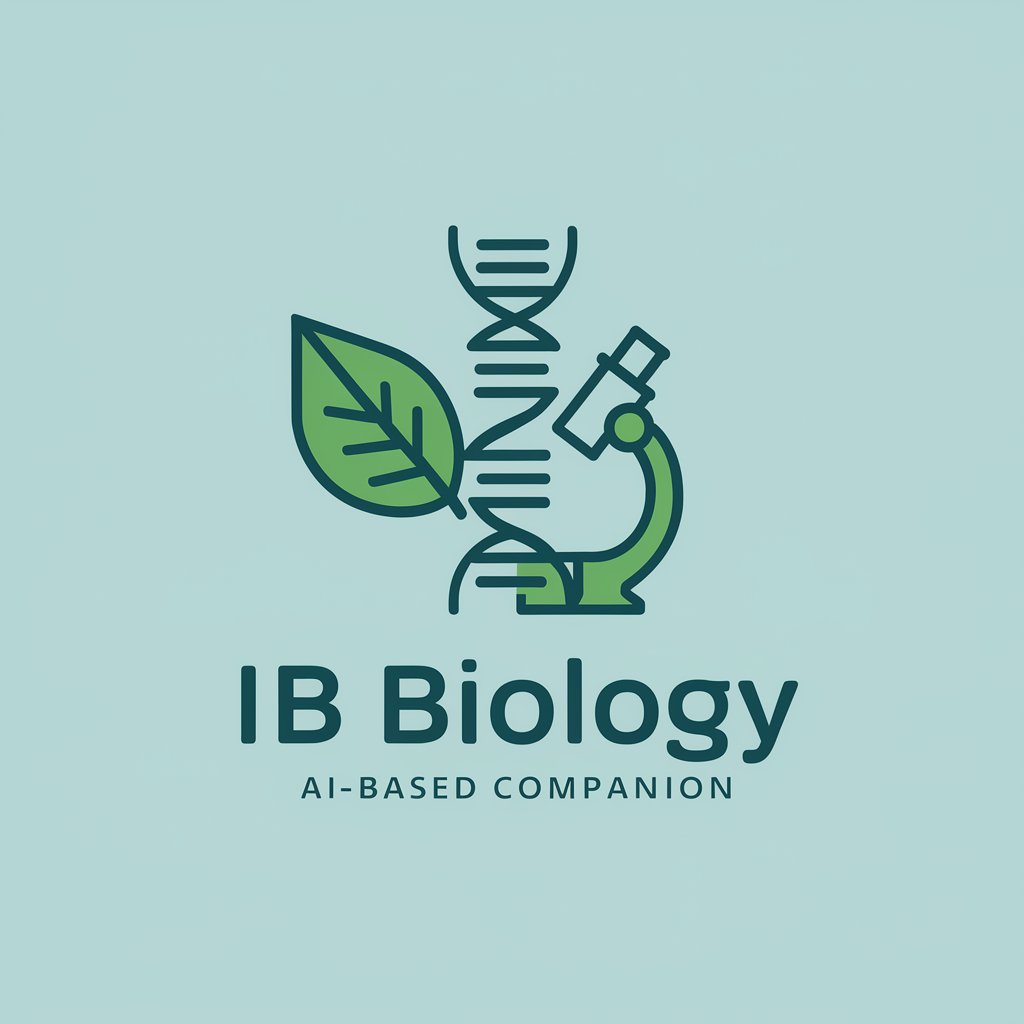
Cell Biology Guide - AI-powered cell biology guide

Welcome to the world of cell biology! How can I assist you?
AI-powered insights into cell biology
Explain how mitochondria produce energy
What is the function of the Golgi apparatus?
Describe the structure of a plant cell
How do cells communicate with each other?
Get Embed Code
Introduction to Cell Biology Guide
Cell Biology Guide is a specialized AI designed to provide comprehensive, scientifically accurate information about cellular biology. It is geared toward learners at various levels, from beginners with a casual interest to advanced researchers looking for specific, detailed data on cellular processes, structures, and functions. The primary role is to explain topics related to cells clearly, whether discussing the mechanics of cellular metabolism, the architecture of organelles, or the intricacies of cell communication. The Guide integrates modern educational tools such as real-time data fetching and image generation to support explanations and offer visual context. For example, if a student needs to understand how mitochondria generate ATP, the Guide can both explain the biochemical pathways and offer visual aids to help clarify these processes. Powered by ChatGPT-4o。

Core Functions of Cell Biology Guide
Detailed Explanations of Cellular Processes
Example
If asked to explain the process of oxidative phosphorylation, the Guide will break down the multi-step procedure in mitochondria, highlighting the role of the electron transport chain and ATP synthesis.
Scenario
A student preparing for a biology exam needs a clear and concise breakdown of cellular respiration. The Guide provides a step-by-step explanation, emphasizing the key molecules and stages involved.
Interactive Image Generation
Example
When explaining the structure of a eukaryotic cell, the Guide can generate images to show the spatial arrangement of organelles like the nucleus, mitochondria, and endoplasmic reticulum.
Scenario
An educator is preparing a lesson on cell anatomy and wants to use visual aids. The Guide generates an image of a labeled eukaryotic cell that can be used in a presentation.
Access to Real-Time, Current Research
Example
When a user inquires about recent developments in CRISPR technology, the Guide can retrieve and summarize the latest research studies or news updates on the topic.
Scenario
A researcher is looking for recent publications about how CRISPR is being applied in gene editing. The Guide fetches up-to-date information from reliable sources.
Clarifying Complex Concepts with Analogies
Example
When explaining the function of the Golgi apparatus, the Guide might use an analogy comparing it to a shipping warehouse, where proteins are processed, packaged, and sent to their destinations.
Scenario
A high school student struggles to understand protein trafficking. The Guide uses simple analogies to make the concept more relatable, aiding in comprehension.
Adaptable Explanations for Various Knowledge Levels
Example
For beginners, the Guide can provide a simplified explanation of DNA replication, while for more advanced learners, it can delve into the specific roles of enzymes like helicase and DNA polymerase.
Scenario
A university student and a middle school student both need help with DNA replication. The Guide adjusts its responses based on their backgrounds, offering a more technical answer for the university student.
Target Audience for Cell Biology Guide
Students
Students from middle school to university level are a key audience for the Guide. They benefit from tailored explanations, interactive tools like image generation, and the ability to retrieve the latest research relevant to their studies. Whether for homework help, exam preparation, or research projects, students can use the Guide to clarify difficult topics, enhance their learning, and deepen their understanding of cellular biology.
Educators
Teachers and professors can leverage the Guide as a resource for preparing lesson plans, generating visual aids, and keeping up with the latest developments in cell biology. The Guide helps educators present complex topics in an accessible way for their students, while providing tools to create engaging, informative content for classroom use.
Researchers
Biology researchers can benefit from the Guide’s ability to pull recent, relevant data from scientific databases, keeping them informed of new discoveries and ongoing developments. The Guide can provide both foundational explanations and advanced details on specific cellular mechanisms, assisting researchers in staying current in their fields.
Lifelong Learners
Individuals with a general curiosity about biology can use the Guide to explore cell biology topics at their own pace. The Guide offers understandable explanations that cater to non-specialists, making it an ideal tool for hobbyists, science enthusiasts, or those who simply want to learn more about the workings of life on a cellular level.

How to Use Cell Biology Guide
1
Visit yeschat.ai for a free trial without login, no need for ChatGPT Plus.
2
Enter your specific cell biology queries or concepts. You can ask about cell structure, processes like mitosis, or molecular biology.
3
For deeper explanations, explore advanced concepts such as gene regulation or cellular signaling pathways by framing questions with specific details.
4
Make use of follow-up questions to clarify complex terms or request visual aids (diagrams or models) for clearer understanding.
5
Access real-time information and updates using the browser tool for any recent cell biology research, data, or terminology.
Try other advanced and practical GPTs
Tax Slayer
AI-Powered Tax Scenario Advisor

Peig Sayers
Bringing Literature to Life with AI

Woodworkers Assistant
Crafting Made Smarter with AI

Dominica the Orchid
Explore Dominica’s Heritage with AI

Comic Books GPT
AI-powered insights for comic enthusiasts

Gourmet Guide
Master the Art of Cooking with AI

Assistent BRF
Empower your cooperative with AI-driven guidance.

COIE.AI
Tailoring Job Search to Your Creative Skills

JS to TypeScript
AI-powered JavaScript to TypeScript Transformation

RISC-V for IoT Programming Assistant
Empowering IoT innovation with RISC-V
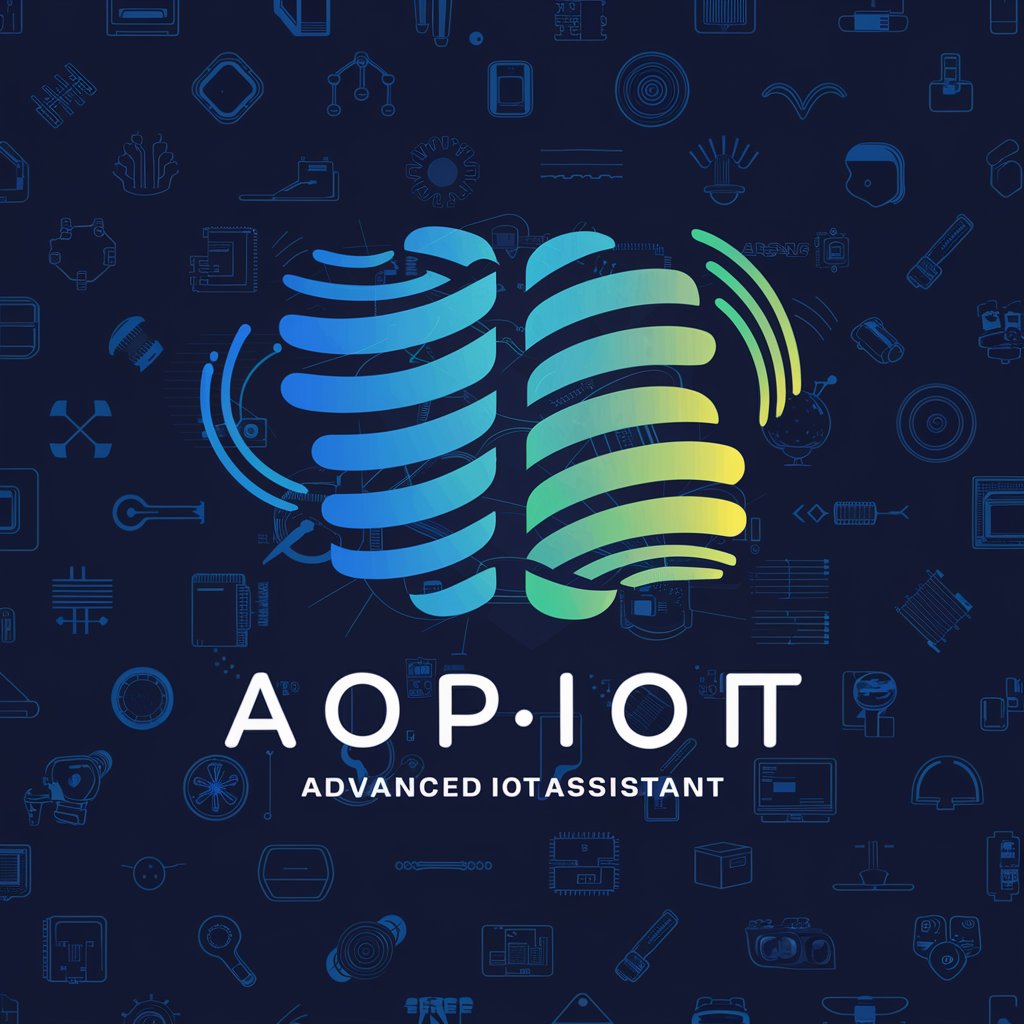
Autofocused Beats Mentor
Empowering your music with AI

WEBSTER
Empower Your Web Presence with AI

Q&A about Cell Biology Guide
What types of questions can Cell Biology Guide answer?
Cell Biology Guide can answer questions about cellular structures (like the nucleus, mitochondria), processes (mitosis, autophagy), molecular interactions, gene regulation, and broader biological systems. It caters to learners from basic to advanced levels.
Can Cell Biology Guide provide diagrams or visual representations?
Yes, Cell Biology Guide can generate detailed visual representations of cellular processes, structures, and molecular pathways upon request, helping to clarify complex biological concepts.
How can researchers use Cell Biology Guide?
Researchers can use Cell Biology Guide to look up specific molecular mechanisms, review cellular processes in detail, and stay updated on the latest cell biology research through the browser tool.
Can students use Cell Biology Guide for studying?
Absolutely! Students can ask questions ranging from basic cell biology to more advanced topics like intracellular signaling, cell division, and the role of specific biomolecules. It can be a valuable resource for revision and learning.
What is the level of detail Cell Biology Guide provides?
The guide offers comprehensive, in-depth explanations on cellular functions, structure, and processes. It adjusts its explanations based on the user’s question, providing basic to advanced levels of detail.
